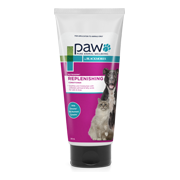
- PAW by Blackmores/
- A Guide To Perfect Your Pet's Health/
- Resources For Your Pet's Skin and Coat Health/
- Causes And Treatment of Your Dog's Rash


Rash decision: how to help your dog avoid skin irritants
If your dog is scratching without relief, chances are there’s a skin problem that’s not going to disappear on its own. Like humans, your dog’s skin is an important barrier between the outside world and the body’s organs. Also like humans, your dog’s skin can be sensitive and prone to irritation by forces both internal and external. You’ll see the signs: redness, raised bumps, hives or even blisters. The good news is that treating the rash can be a simple and pain-free process – for you and your pet. And once cared for, there are plenty of grooming practices you can put in place to reduce the risk of the rash returning.What are the different causes of a dog’s rash?
A dog’s rash can be caused by everything from environmental irritants (heat, poison ivy, other plants) to allergies, parasites and skin infections. Genetics, inflammatory conditions and hormone imbalances can also cause dog rash, and if you suspect any of these – or can’t identify the cause of the rash – you should seek veterinary advice immediately.What is dog heat rash?
Temperatures can soar across Australia during the summer months, and while all dogs feel the heat, some are more susceptible to heat rash than others, in particular overweight dogs and those with large wrinkles of skin. While heat rash can present like a number of other common rashes, symptoms to look out for include tender and red skin (usually in skin folds and on the belly), scabs and sores, continuous licking and scratching, itchy and irritated skin, and small pimples in a concentrated area.How can I treat the irritation?
If the heat rash is minor, you can ease irritation by cooling down the area impacted. Apply a cold compress or a bag of ice to the rash (make sure there’s a towel in between the skin and the ice) for around 10 minutes, to reduce the sting. Aloe vera is also cooling and healing, and when applied in gel form can give immediate relief.How can I avoid my dog getting it?
Simple – keep your dog cool and hydrated. Dogs naturally have a higher body temperature than humans, plus they’re walking around all day with a fur coat on. It’s not surprising they overheat quickly.
To avoid heat rash:
- limit the amount of time your dog spends in the sun, particularly over summer
- walk your dog in the shade or during the coolest part of the day
- splash your dog with water
- make sure water bowls are full
- if you notice panting and fatigue, bring your dog inside to a cool, dry place
What is dog allergy rash, and how can I treat it?
Just like us, dogs can suffer from all manner of allergies – some of which present their symptoms in the form of a rash. The most common allergies are:Flea allergy dermatitis
This common skin disease can be brought on from having just one or two fleas on the skin. In this case, prevention is the best treatment: make sure your pet is up-to-date with flea treatments. If you do notice a reaction (usually open, oozing sores), your vet may recommend an aggressive spot-on flea treatment as well as antibiotics or topical creams.Atopic dermatitis
This is a hypersensitive reaction to indoor and environmental allergens, from pollens and dust mites to mould spores. You’ll usually see it flare up in warm, moist parts of your dog’s body, like the groin or around the eyes. Again, prevention is the best way to make sure your pooch avoids these rashes – remove allergens from the environment, or change environments.To treat atopic dermatitis, long-term management is needed. There are three main strategies to do this:
- 1. Remove the allergens from the skin
- 2. Manage the infection and inflammation
- 3. Repair the skin barrier
Regular shampooing with mild medicated or soothing shampoos such as PAW Mediderm Medicated Shampoo or PAW NutriDerm® Replenishing Shampoo, can help to treat any discomfort. In addition, the skin can be moisturised using rich conditioners containing ceramides such as PAW NutriDerm® Replenishing Conditioner.
- Food allergy dermatitis. This is less common, and is ignited by food intolerances. Talk to your vet about food elimination trials to work out what, exactly, is causing the irritation and rash.
- Mange, which is initiated by two types of mites. Your vet may recommend isolating your pet, and prescribe certain medications. At home, you can manage any secondary skin irritation by using sulphate-free shampoos and conditioners, like PAW Sensitive Skin Shampoo and PAW Conditioning and Grooming Spray. There are also supplements available, such as PAW Dermega Omega 3 & 6 Oral Supplement, which contains fatty acids that aid in the treatment of inflamed skin conditions.
- Hot Spots. These can be caused by irritants such as infections, wounds and fleabites, aggravated by your dog chewing at the skin. Vets will trim the coat around the hot spot, clean the area, soothe it with a cool compress, and apply a topical cream to treat the rash.
What is stinging nettle rash on dogs?
The stinging nettle lives up to its name – this plant is covered in thousands of tiny hairs, which break off and inject a histamine into dogs (and humans) when rubbed against. If the contact is external only, the toxicity can lead to redness, swelling and intense itching.How to treat the irritation?
Thankfully, most contact with stinging nettles results in a rash only. If you encounter this, gently wash your dog’s skin at the point of contact, and gently scrape the pads of feet to remove embedded nettles if you suspect your pet stepped on the plant.If your dog is having a more intense reaction to the contact, or if you suspect it ingested the nettles, see a vet immediately.




